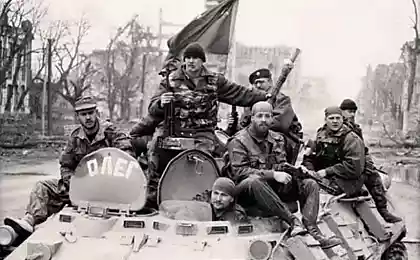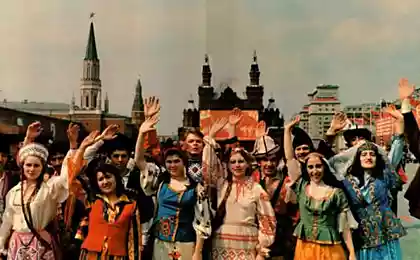2258
Soviet science fiction. Locations
Stills from "Teens in the Universe»
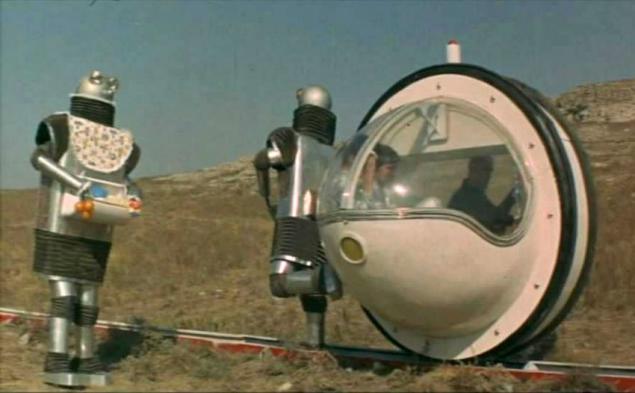
Calais
Medieval cave fortress city of Calais, located in the Crimea, was chosen for filming sci-fi movie "Hard to be a god", shot by German director Peter Fleischmann during perestroika, in 1989. The picture has been put on the novel by Strugatsky brothers, written in 1963. Currently, from the once thriving town there are not many, but what is left, is admirable. There is a cut through the rock caves, the remains of mosques. So far in Calais finds a treasure. In the XVII century the fortress kept Russian captives, for the liberation of the Crimean khans who demanded ransom. Once there were about 400 houses, inhabited by five thousand. Residents. Calais was abandoned in the late XIX century, when its inhabitants moved to the place where the water supply problem was less acute.
During the filming of a commercial caves Chaush-Kobasa located rate-progressors scientists who observed the work of Don Rumata Estorskogo. "It's hard to be a god" was shot in both the medieval city - Eski-Kermen. Filming also took place on the hill Polikurovsky in Yalta at the White Cliffs (Ak-Kaya) Valley Bink-Karasu and Mangupe.
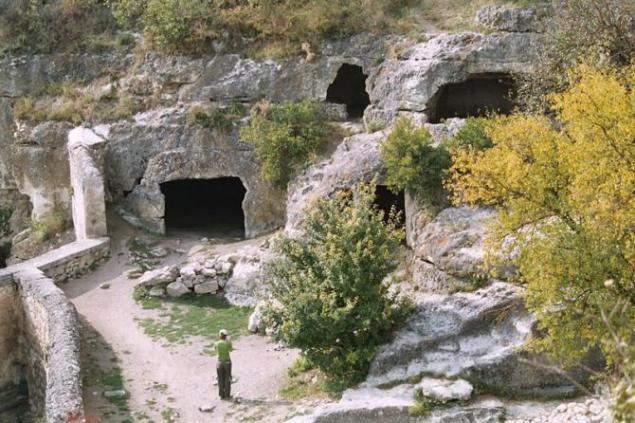
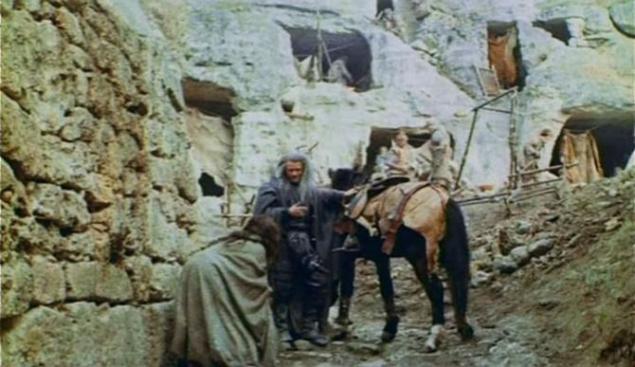
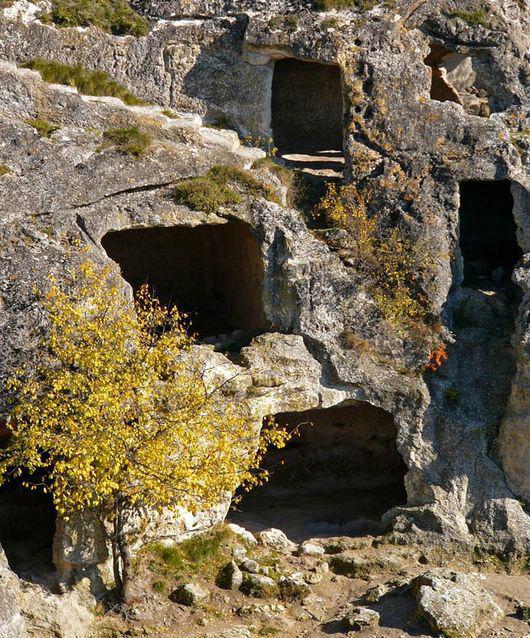
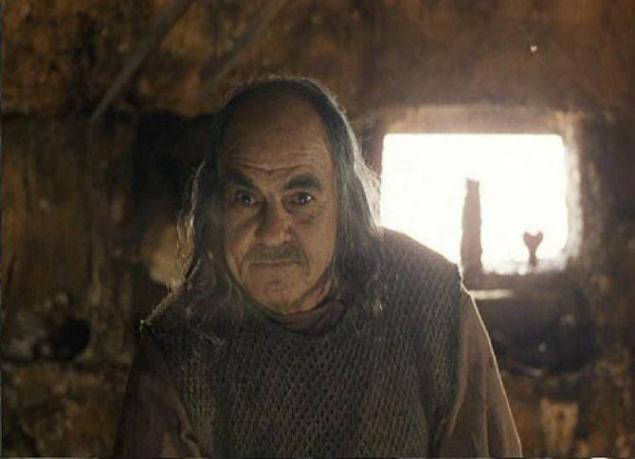
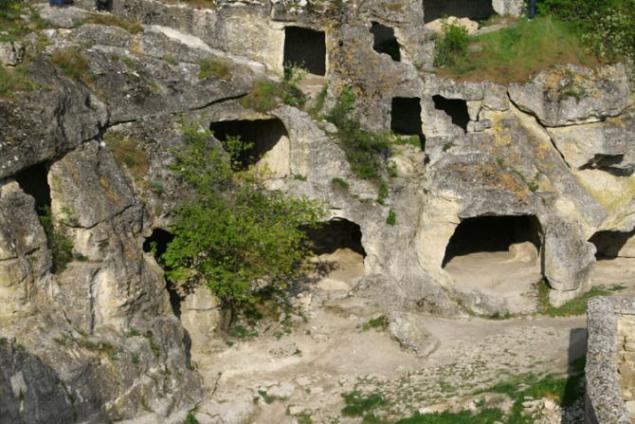

Cape Opuk
Cape Opuk became a place of the famous movie "Teens in the Universe", which was released in theaters in 1974. It was filmed by director Richard Viktorov. The action of the film takes place on a planet in the constellation Cassiopeia Varian. The southern coast of the Kerch Peninsula as possible approached to shoot. The film crew was allowed to shoot at a military test site, located in this place. Funnel from multiple projectiles resembled craters from meteorites and deserted place looked like a lifeless surface of another planet. In this area, the soil has a high concentration of salts, which also enhances the effect. Consultant was famous Soviet cosmonaut Georgy Coast, which contributed to the fact that the crew was allowed to shoot at the range. All models of equipment used in the film, including the spaceship "Dawn" was made a life-size, and, according to participants in the shooting process was a complete sense of arrival to the planet of representatives of an alien civilization.
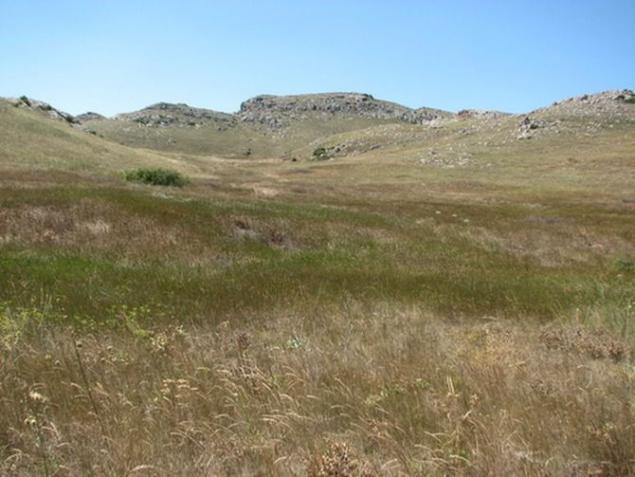
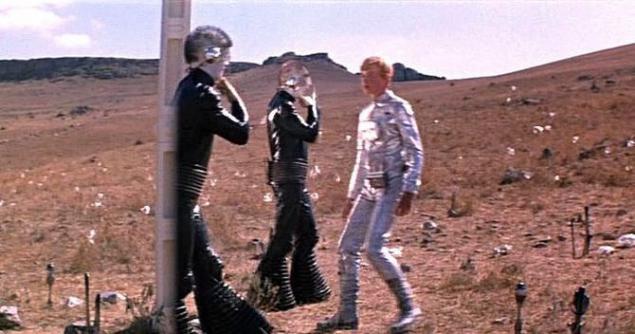
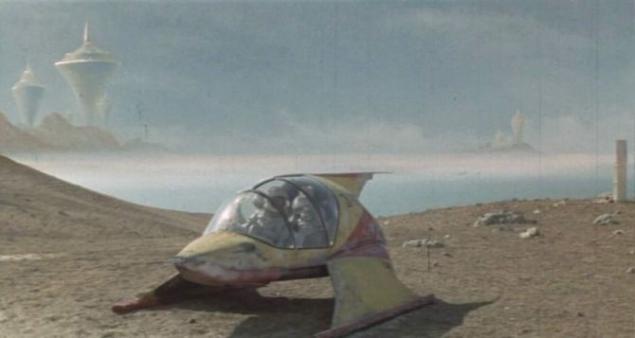
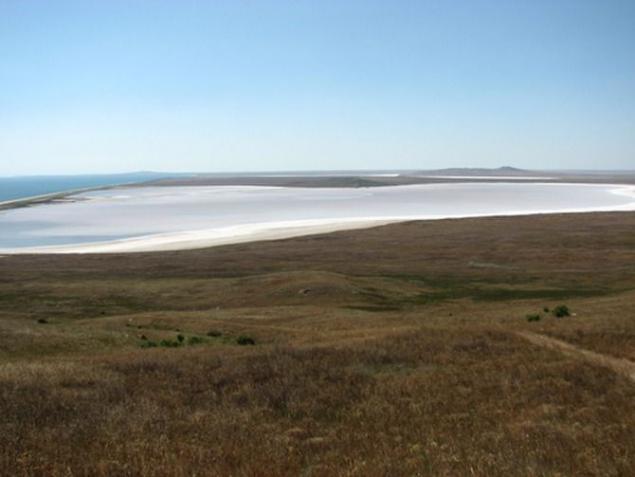
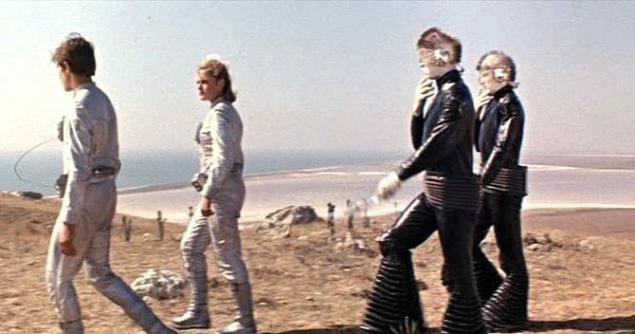

Uzon Caldera
In 1973, the Soviet Union released film "Sannikov Land", which was directed by Albert Mkrtchyan and Leonid Popov. Some footage for this picture (events after the earthquake and the cooling of the Earth) were recorded on the territory of the Kronotsky Reserve, in the caldera Uzon Kamchatka. This place is known for its geysers. Apparently, the combination of rising above the ground and a pair of snow on the hills spodviglo filmmakers shoot tragic moment violation fragile natural balance. The actors in the caldera visit failed: scenes involving them were recorded in the halls "Lenfilm", on the Gulf of Finland, in Yalta and Kabardino-Balkaria. Kamchatka visited only the directors and cameramen who conducted the panoramic shooting.

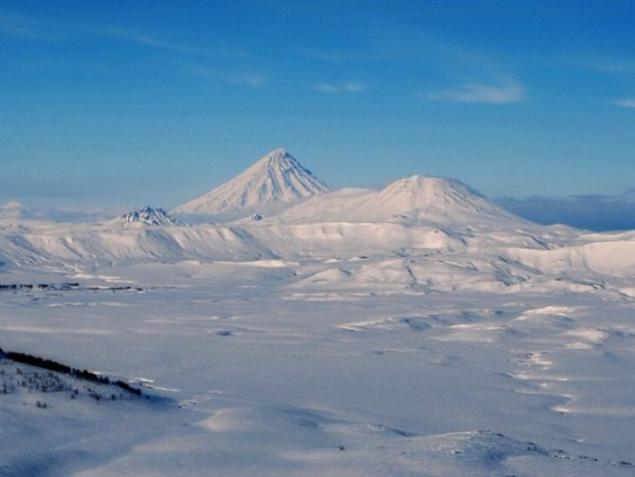
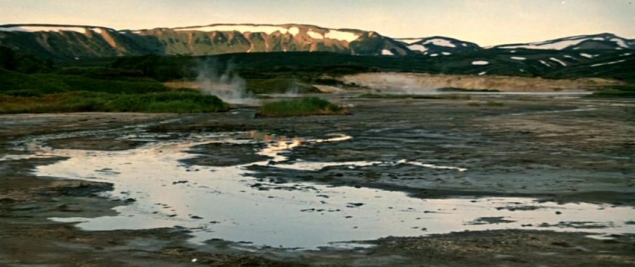
Bay of Balaclava
Balaclava Bay - one of the most scenic places in the Crimea. There were shooting the famous movie "Amphibian Man". Originally planned to shoot the picture in the Sargasso Sea, but this journey promised to be too expensive, so the trip refused. Another place could be filming the coast of the Caspian Sea, but there was muddy water. The bottom of the Black Sea was not as rich as in the Sargasso Sea, so it was decided to use plastic copies of coral, rocks, seaweed foam. While in the Soviet Union was not a good instrument for filming under water, in connection with what the Americans say that the attempt to film the novel by Alexander Belyaev doomed to failure. Up to this point no Soviet filmmakers did not shoot a feature film under water, were only documentaries. Nevertheless, the picture was released in 1961 and became one of the most popular Soviet films. In 1967 he conducted a scientific experiment, dubbed "Operation" Ichthyander. '" His purpose to was to examine the possibility of a prolonged stay of the person under the water.
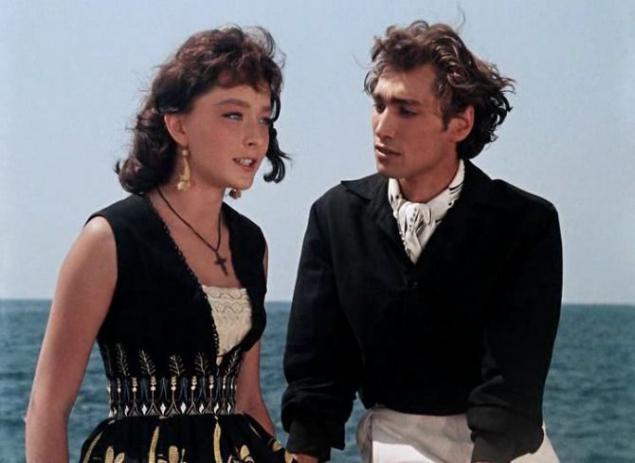
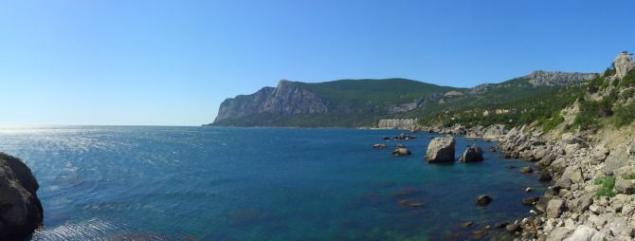


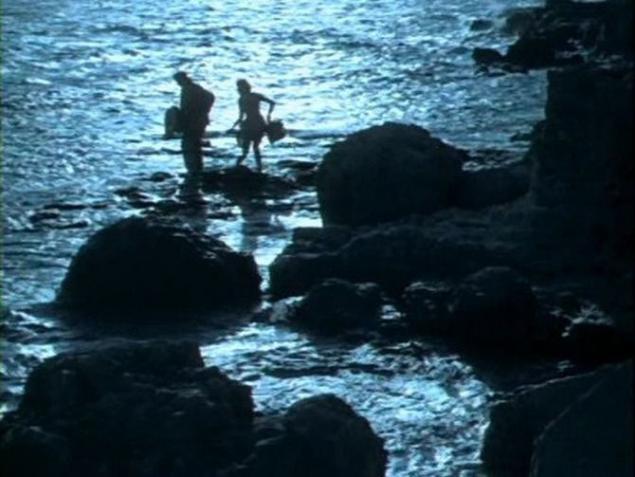
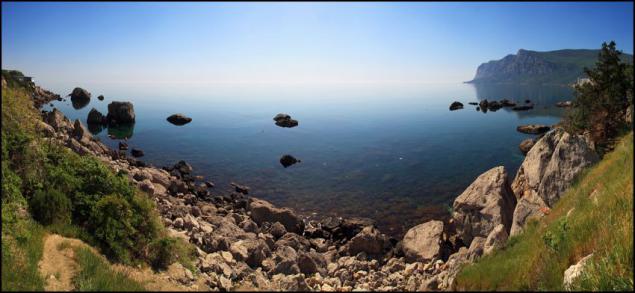
"Chymbulak»
In 1979, the Soviet Union released film "Hotel" Dead Mountaineer "" based on the novel by Strugatsky brothers. Landscape photography for this picture wire near the ski resort "Chimbulak" ("Shimbulak") in Zailiysky Alatau in Almaty region of Kazakhstan. The resort is still in effect. "Chimbulak" is located at an altitude of 2260 m above the level of 25 km from Almaty. Ski in this place started to operate since the mid 50s.
Panoramic shooting for the film was recorded slightly above the gorge, in the tract Gate Tuyuk-Su. This place is really beautiful: the snowy slopes are decorated with evergreen Schrenk spruce. The hotel building, hit the shot, it felt like a European, so many viewers the impression that the survey was carried out anywhere in the Alps. The inn itself has not yet been preserved. Interestingly, now close to the "Chimbulak" in the Small Almaty gorge (about an hour walk) is a monument to the dead climbers Kazakhstan.

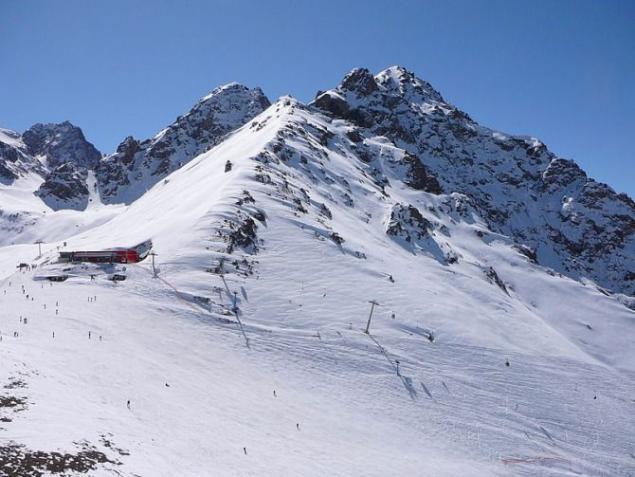
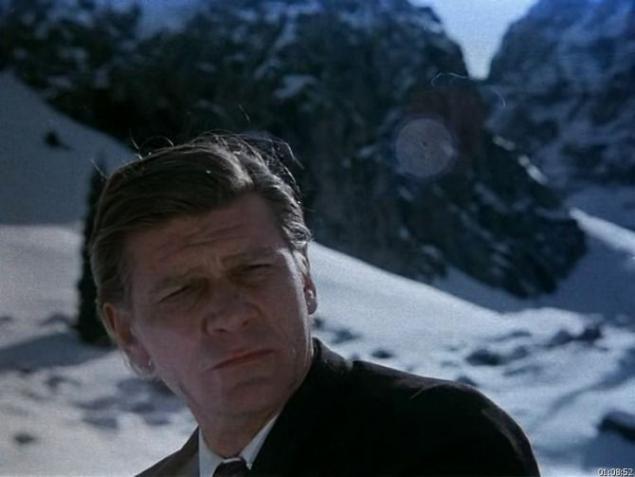
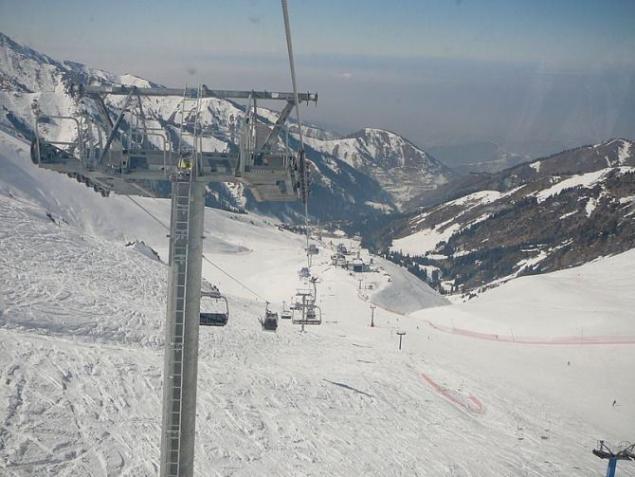
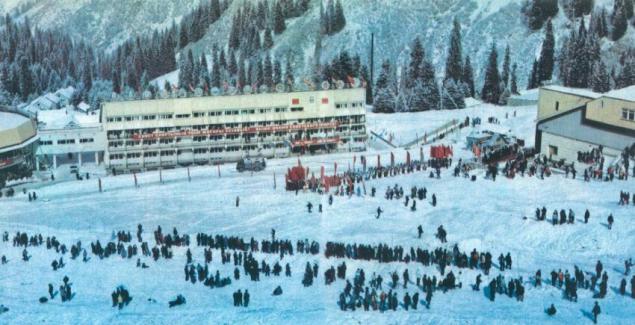
Karakum
In Karakum shot Danelia many favorite movie "Kin-Dza-Dza". The desert became a place where the foreman Vladimir Mashkov and student Gedevan fall after careless handling "machine moving." The shooting took place in the Karakum Desert in 1984 near the town of Nebit Dag Turkmen SSR. Had to shoot in difficult conditions. It so happened that the actors come here in the summer, in the heat, although originally planned for the spring survey. During filming occurred a curious case. Due to an error with the goods pepelats model was sent to Vladivostok. As a result, the film crew had to roast in the sun more 1, 5 months. Shooting began at six o'clock in the morning, but at 12 o'clock they suspended because of the scorching sun. According to the actor, it was the most exhausting shooting in their lives.
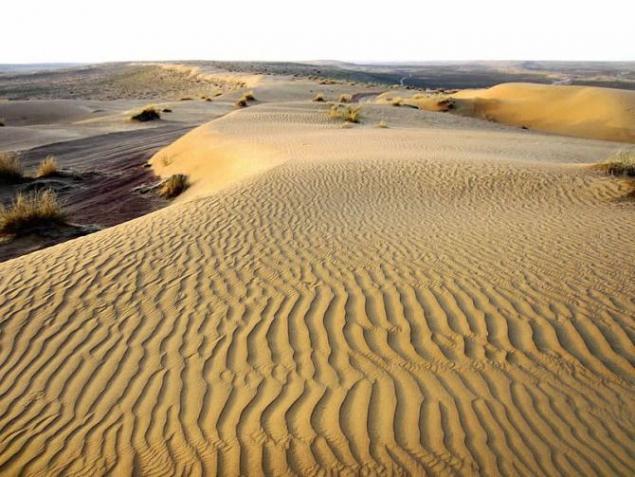
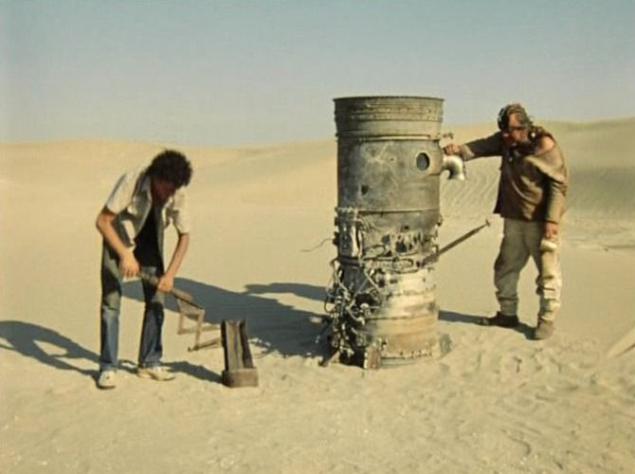
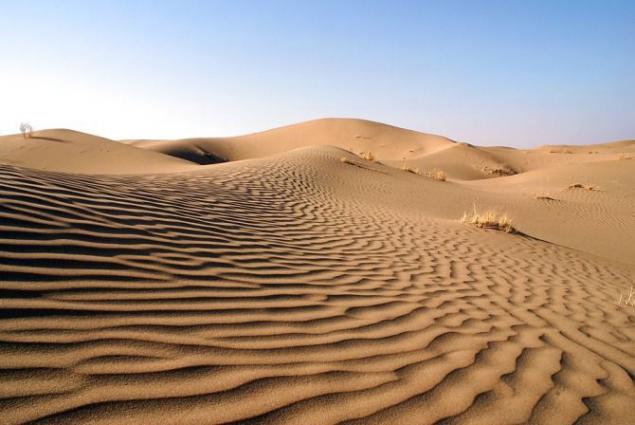
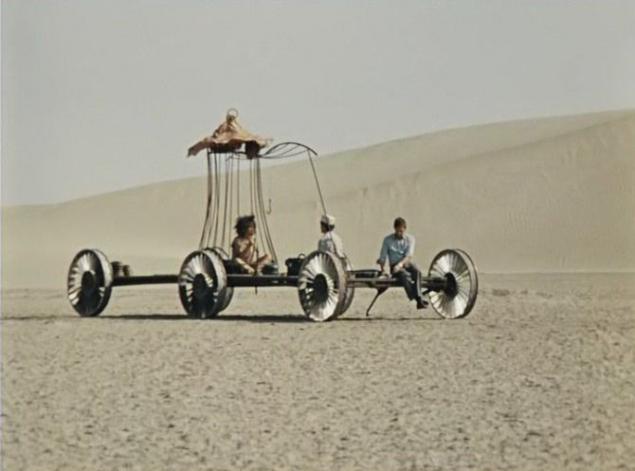
Isfara
Neighborhoods Tajik city of Isfara attracted many Soviet filmmakers. Originally it was planned to shoot the film "Stalker", but then the shooting moved to Estonia. In the end, next to the abandoned oil refinery were filmed scenes of the film "Through hardship to the stars." Desert place was to portray the crumbling planet Dessa. Here was located Glan Institute dealing with the problem of clean air. It so happened that during filming in 1977 in Isfara an earthquake that destroyed the city. The film crew was at the center of these events.


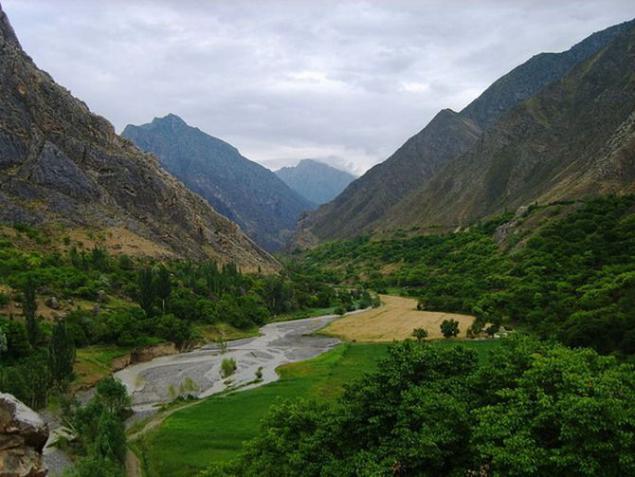
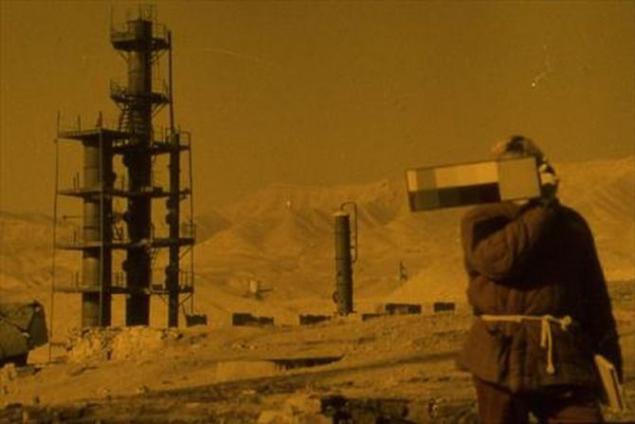
Source: smartnews.ru

Calais
Medieval cave fortress city of Calais, located in the Crimea, was chosen for filming sci-fi movie "Hard to be a god", shot by German director Peter Fleischmann during perestroika, in 1989. The picture has been put on the novel by Strugatsky brothers, written in 1963. Currently, from the once thriving town there are not many, but what is left, is admirable. There is a cut through the rock caves, the remains of mosques. So far in Calais finds a treasure. In the XVII century the fortress kept Russian captives, for the liberation of the Crimean khans who demanded ransom. Once there were about 400 houses, inhabited by five thousand. Residents. Calais was abandoned in the late XIX century, when its inhabitants moved to the place where the water supply problem was less acute.
During the filming of a commercial caves Chaush-Kobasa located rate-progressors scientists who observed the work of Don Rumata Estorskogo. "It's hard to be a god" was shot in both the medieval city - Eski-Kermen. Filming also took place on the hill Polikurovsky in Yalta at the White Cliffs (Ak-Kaya) Valley Bink-Karasu and Mangupe.






Cape Opuk
Cape Opuk became a place of the famous movie "Teens in the Universe", which was released in theaters in 1974. It was filmed by director Richard Viktorov. The action of the film takes place on a planet in the constellation Cassiopeia Varian. The southern coast of the Kerch Peninsula as possible approached to shoot. The film crew was allowed to shoot at a military test site, located in this place. Funnel from multiple projectiles resembled craters from meteorites and deserted place looked like a lifeless surface of another planet. In this area, the soil has a high concentration of salts, which also enhances the effect. Consultant was famous Soviet cosmonaut Georgy Coast, which contributed to the fact that the crew was allowed to shoot at the range. All models of equipment used in the film, including the spaceship "Dawn" was made a life-size, and, according to participants in the shooting process was a complete sense of arrival to the planet of representatives of an alien civilization.






Uzon Caldera
In 1973, the Soviet Union released film "Sannikov Land", which was directed by Albert Mkrtchyan and Leonid Popov. Some footage for this picture (events after the earthquake and the cooling of the Earth) were recorded on the territory of the Kronotsky Reserve, in the caldera Uzon Kamchatka. This place is known for its geysers. Apparently, the combination of rising above the ground and a pair of snow on the hills spodviglo filmmakers shoot tragic moment violation fragile natural balance. The actors in the caldera visit failed: scenes involving them were recorded in the halls "Lenfilm", on the Gulf of Finland, in Yalta and Kabardino-Balkaria. Kamchatka visited only the directors and cameramen who conducted the panoramic shooting.



Bay of Balaclava
Balaclava Bay - one of the most scenic places in the Crimea. There were shooting the famous movie "Amphibian Man". Originally planned to shoot the picture in the Sargasso Sea, but this journey promised to be too expensive, so the trip refused. Another place could be filming the coast of the Caspian Sea, but there was muddy water. The bottom of the Black Sea was not as rich as in the Sargasso Sea, so it was decided to use plastic copies of coral, rocks, seaweed foam. While in the Soviet Union was not a good instrument for filming under water, in connection with what the Americans say that the attempt to film the novel by Alexander Belyaev doomed to failure. Up to this point no Soviet filmmakers did not shoot a feature film under water, were only documentaries. Nevertheless, the picture was released in 1961 and became one of the most popular Soviet films. In 1967 he conducted a scientific experiment, dubbed "Operation" Ichthyander. '" His purpose to was to examine the possibility of a prolonged stay of the person under the water.






"Chymbulak»
In 1979, the Soviet Union released film "Hotel" Dead Mountaineer "" based on the novel by Strugatsky brothers. Landscape photography for this picture wire near the ski resort "Chimbulak" ("Shimbulak") in Zailiysky Alatau in Almaty region of Kazakhstan. The resort is still in effect. "Chimbulak" is located at an altitude of 2260 m above the level of 25 km from Almaty. Ski in this place started to operate since the mid 50s.
Panoramic shooting for the film was recorded slightly above the gorge, in the tract Gate Tuyuk-Su. This place is really beautiful: the snowy slopes are decorated with evergreen Schrenk spruce. The hotel building, hit the shot, it felt like a European, so many viewers the impression that the survey was carried out anywhere in the Alps. The inn itself has not yet been preserved. Interestingly, now close to the "Chimbulak" in the Small Almaty gorge (about an hour walk) is a monument to the dead climbers Kazakhstan.





Karakum
In Karakum shot Danelia many favorite movie "Kin-Dza-Dza". The desert became a place where the foreman Vladimir Mashkov and student Gedevan fall after careless handling "machine moving." The shooting took place in the Karakum Desert in 1984 near the town of Nebit Dag Turkmen SSR. Had to shoot in difficult conditions. It so happened that the actors come here in the summer, in the heat, although originally planned for the spring survey. During filming occurred a curious case. Due to an error with the goods pepelats model was sent to Vladivostok. As a result, the film crew had to roast in the sun more 1, 5 months. Shooting began at six o'clock in the morning, but at 12 o'clock they suspended because of the scorching sun. According to the actor, it was the most exhausting shooting in their lives.




Isfara
Neighborhoods Tajik city of Isfara attracted many Soviet filmmakers. Originally it was planned to shoot the film "Stalker", but then the shooting moved to Estonia. In the end, next to the abandoned oil refinery were filmed scenes of the film "Through hardship to the stars." Desert place was to portray the crumbling planet Dessa. Here was located Glan Institute dealing with the problem of clean air. It so happened that during filming in 1977 in Isfara an earthquake that destroyed the city. The film crew was at the center of these events.




Source: smartnews.ru
The most impressive examples of ekoreklamy
Why is the bride, when you complete a bedroom slot machines













